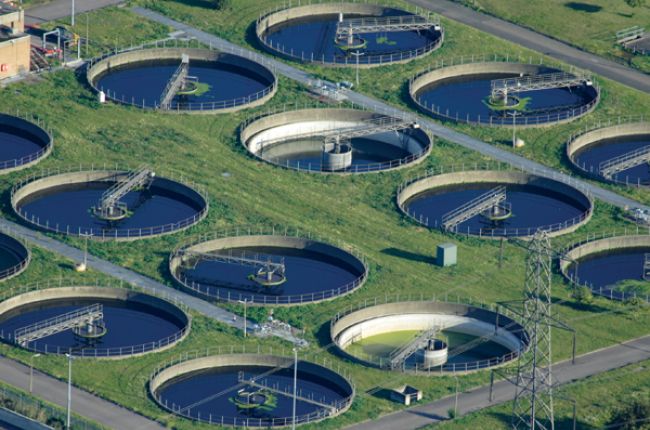Efficient Waste Water Treatment Solutions: Secret Techniques and Advantages
Strategic Approaches to Improve Waste Water Therapy Effectiveness and Decrease Environmental Influence
In the world of waste water therapy, the quest for improved effectiveness and reduced ecological effect is a perpetual obstacle that requires tactical solutions. The integration of sophisticated treatment modern technologies, energy-efficient procedures, source healing methods, improved nutrient removal techniques, and smart monitoring and control systems stands for a diverse framework for addressing these pushing issues.
Advanced Treatment Technologies
Cutting-edge membrane layer filtering systems have changed advanced wastewater treatment procedures, dramatically enhancing the elimination of impurities. This technology has verified to be extremely effective in eliminating a large array of contaminants, including drugs, heavy metals, and organic compounds, which are often challenging to remove through standard therapy methods.
In addition, membrane filtration systems supply many benefits over standard treatment approaches. Additionally, these systems are very versatile and can be easily integrated into existing therapy plants or made use of as standalone devices for decentralized applications.
Energy-Efficient Processes
The combination of energy-efficient procedures in wastewater therapy systems is important for optimizing resource usage and lowering functional prices. By applying energy-efficient technologies, treatment plants can considerably decrease their carbon impact and overall ecological effect. One crucial strategy to improving power efficiency in wastewater therapy is the use of advanced oygenation systems, such as great bubble diffusers or surface area aerators, which can improve oxygen transfer performance and minimize energy intake. Additionally, including power recovery systems, like anaerobic digestion for biogas manufacturing or utilizing excess warm for thermal procedures, can assist counter energy requirements and promote sustainability.
Additionally, enhancing process control and automation with making use of innovative sensors and keeping track of systems can improve general energy effectiveness by readjusting procedures in real-time based upon real demand and conditions. Executing power audits and routinely keeping track of energy performance indications are crucial techniques to recognize locations for renovation and track energy-saving efforts successfully. On the whole, the fostering of energy-efficient procedures in wastewater treatment not just profits the environment yet also adds to lasting price financial savings and functional sustainability.
Source Healing Approaches
With an emphasis on maximizing source application and sustainability in wastewater therapy systems, the execution of source recuperation methods arises as a pivotal aspect in boosting functional effectiveness. Source recuperation approaches in wastewater therapy entail the identification and extraction of beneficial sources from the waste stream, thereby turning what was as soon as considered waste right into a useful property. By executing source healing methods such as nutrient removal and recuperation, energy generation from raw material, and the manufacturing of recyclable water, wastewater my latest blog post therapy plants can reduce ecological effect while optimizing efficiency.

Enhanced Nutrient Removal Techniques
Applying sophisticated nutrient elimination techniques is essential for maximizing the efficiency of wastewater therapy systems. One of the key strategies made use of for improved nutrient elimination is the process of organic nutrient removal (BNR), which includes the removal of nitrogen and phosphorus through biological procedures.

In addition to BNR, advanced treatment methods such as membrane bioreactors (MBRs) and constructed wetlands can also be employed to enhance nutrient removal effectiveness. By integrating these innovative nutrient elimination strategies right into wastewater therapy municipalities, systems and industries can properly lower nutrient contamination and protect the setting.
Smart Monitoring and Control Equipment
Making use of sophisticated modern technology, the assimilation of clever surveillance and control systems transforms the operational effectiveness of wastewater therapy centers. These systems integrate sophisticated sensors and data analytics to constantly keep an eye on vital parameters such as pH degrees, turbidity, liquified oxygen, and circulation prices in real-time. By collecting and analyzing this data, drivers can obtain valuable insights into the efficiency of the therapy processes, making it possible for proactive changes to optimize treatment performance.
Smart tracking and control systems also sustain remote monitoring abilities, allowing drivers to access real-time information and control functions from off-site places. This remote ease of access boosts operational adaptability and responsiveness, allowing speedy interventions in case of system breakdowns or fluctuations in influent top quality. Additionally, the anticipating maintenance abilities of these systems aid stop tools straight from the source failures and decrease downtime, ultimately boosting the overall dependability of wastewater treatment operations (Waste Water Treatment).
Final Thought
In conclusion, critical methods such my link as sophisticated treatment modern technologies, energy-efficient processes, resource healing strategies, boosted nutrient elimination strategies, and smart tracking and control systems play an important function in improving wastewater therapy efficiency and lessening ecological influence. By executing these methods, wastewater therapy plants can enhance their total efficiency, decrease power consumption, recoup important sources, and make certain conformity with environmental policies. These strategies are important for efficient and lasting wastewater administration techniques.

In verdict, critical techniques such as sophisticated therapy innovations, energy-efficient procedures, resource healing strategies, improved nutrient removal methods, and clever monitoring and control systems play an important duty in enhancing wastewater therapy effectiveness and reducing ecological impact.